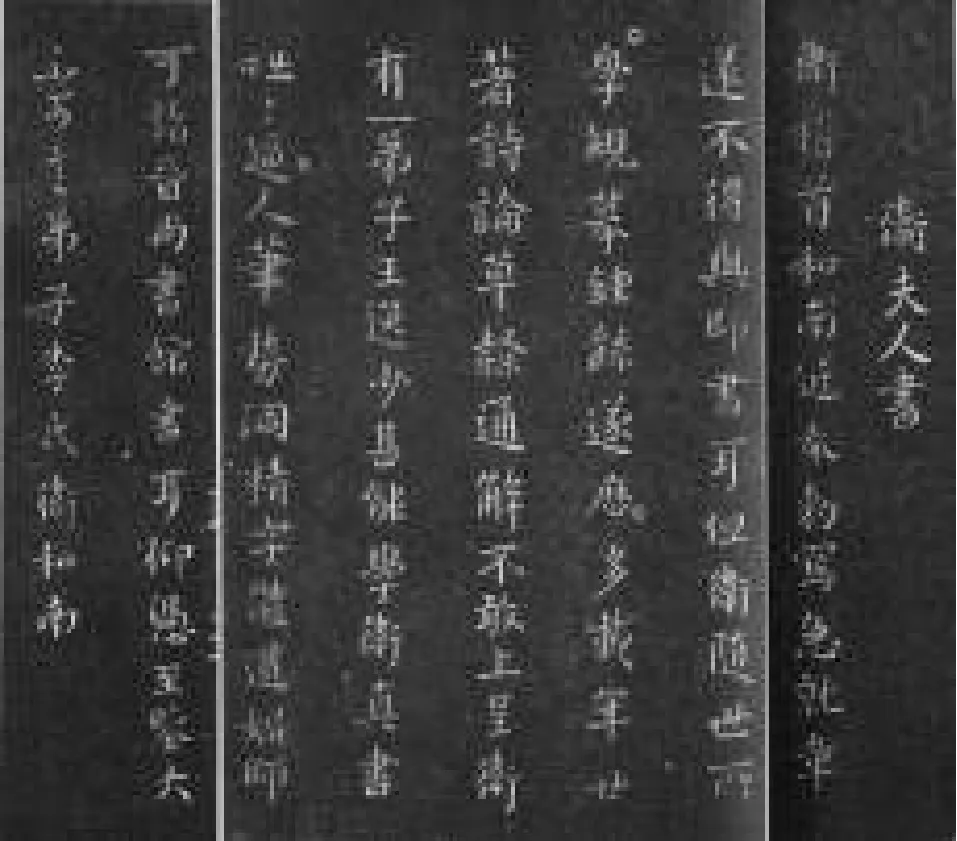心達筆自正
——韻味無窮的書法品評標準
文/五花肉
心達筆自正
——韻味無窮的書法品評標準
Pure Thoughts Makes Exquisite Calligraphy——Chinese Calligraphic Aesthetic Standards of Infinitive Charmand Interest
文/五花肉

書寫法度rules of calligraphy楷書regular script美學鑒賞Aesthetic appreciation

——李陽冰(唐)
Wang Xizhi developed eight principles of Chinese"Yong".If you understand the eight principles,you will get good knowledge of Chinese calligraphy.

——柳公權(唐)
The key rule of Chinese calligraphy is the combination of pure thoughts and exquisite skills.
從“象形”的本源出發,伴隨著漢字數千年來的規范化演進,書法作為一門中華民族書寫文字的特有藝術,在幫助漢字超越符號屬性的同時,不知不覺間已成為表達民族美感的杰出載體。
Evolving from hieroglyph,Chinese calligraphy has witnessed the Chinese character standardization for thousands of years.As a unique writing art,Chinese calligraphy has gone beyond the scope of letter symbols and reflected the aesthetic concept of Chinese nation.
盡管有學者認為,書法是一項個性化的私人活動,其發展應遠離諸多限制性標準,但事實上,在中國漫長的書法發展史上,勤于錘煉“字內功”的人們,卻始終執著于書寫法度的研究與倡導。
Some scholars believe that Chinese calligraphy should be an individual art without rules and restrictions,but in fact those who practise internal skills of calligraphy have been developing the standards and codes of writing.


以楷書為例,東漢時期,在蔡邕著《九勢》歸納書法運筆規則的基礎上,衛爍著《筆陣圖》明確了楷書七種基本點畫的形態美規范。晉王羲之創《永字八法》確立楷書的基本用筆法則。到了唐代,楷書日趨程式化,并形成歐體、顏體、柳體等代表字體,成為后世習書的標準范本。清代,邵瑛集前人之大成,著《間架結構摘要九十二法》,系統歸納漢字結體書寫方法,貢獻出歷史上第一本完整、實用的楷書法帖。
We shall take regular script for example.In the Eastern Han Dynasty,on the basis of"Jiu Shi"(by Cai Yong) on the rules of calligraphic style,Wei Shuo wrote"Bi Zhen"to codified seven standard styles of strokes.In the Jin Dynasty,Wang Xizhi wrote"eight principles of Chinese Yong"to develop the basic rules of regular script.In the Tang Dynasty,regular script derived the "Style of Ouyang Xun","Style of Yan Zhenqing"and "Style of Liu Gonequan",which became the model for calligraphy for posterity.In Qing Dynasty,Shao Yingwrote "Ninety-two Structures of Regular Script" to systemically summarize the standardization of Chinese regular script,which was the first complete mode lcalligraphic work of Chinese regular script.

此外,中國文人還將對人的倫理評判模式移植到書法上,以儒家思想為指導,強調心正筆正,指出用筆的六大忌諱:太肥太瘦、多露鋒芒、深藏圭角、上大下小、左高右低、前多后少,并要求書者嚴格遵守禮的規范……這也逐漸演化成為中華民族品評文字與人生的無形標準。
Furthermore,Chinese literatus integrated Confucian ethical standards into calligraphy and emphasized the combination of pure thoughts and exquisite skills. They listed six taboos:too fat or too thin;too many sharp points;vague angles;larger above and smaller below;higher on the left and lower on the right;more on the front and less on the back.These rules were also the etiquette of Chinese calligraphy,which has become the moral standards of Chinese people.
誠如林語堂先生所指出,通過書法,中華民族形成了自己獨特的書法審美情趣,如線條上的剛勁、流暢、蘊蓄、精微,形式上的和諧、勻稱、對比、平衡。書法藝術給美學鑒賞提供了一整套術語,奠定了中華民族美學觀念的基礎。
As Mr Lin Yutang(Chinese famous writer)said,Chinese nation developed a unique aesthetic concept for calligraphy that is strength,smooth,implicitness and subtleties in strokes;and harmony,symmetry and balance in structures.The art of Chinese calligraphy has developed a system of aesthetic terminology for aesthetic appreciation,which lays a solid foundation for Chinese nation's aesthetic concept.
(支持單位:上海市質量和標準化研究院)


